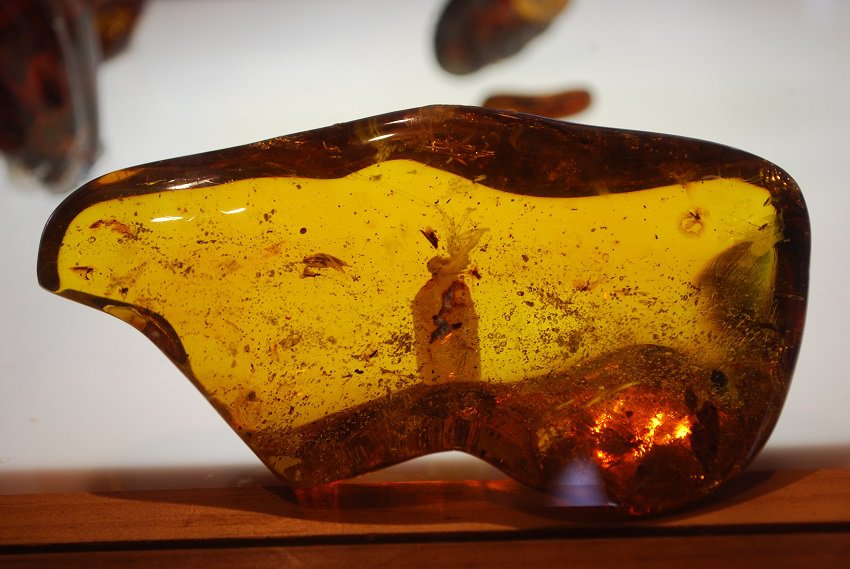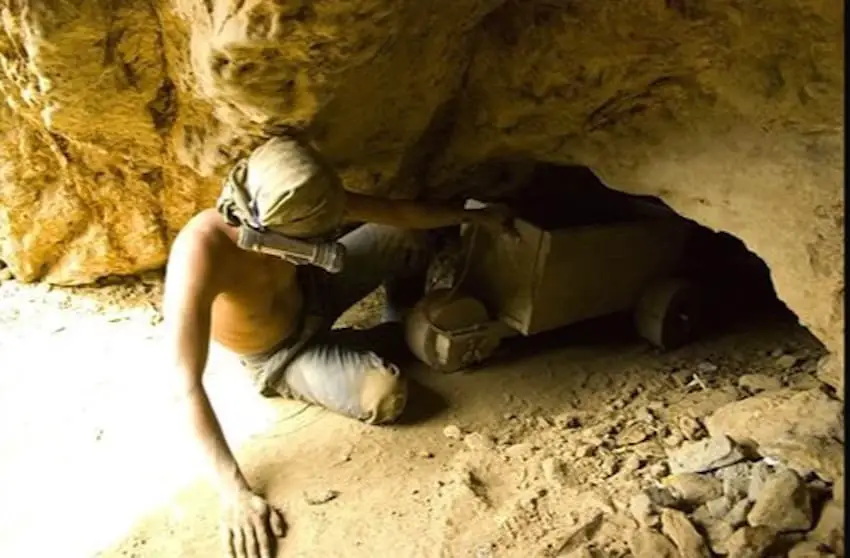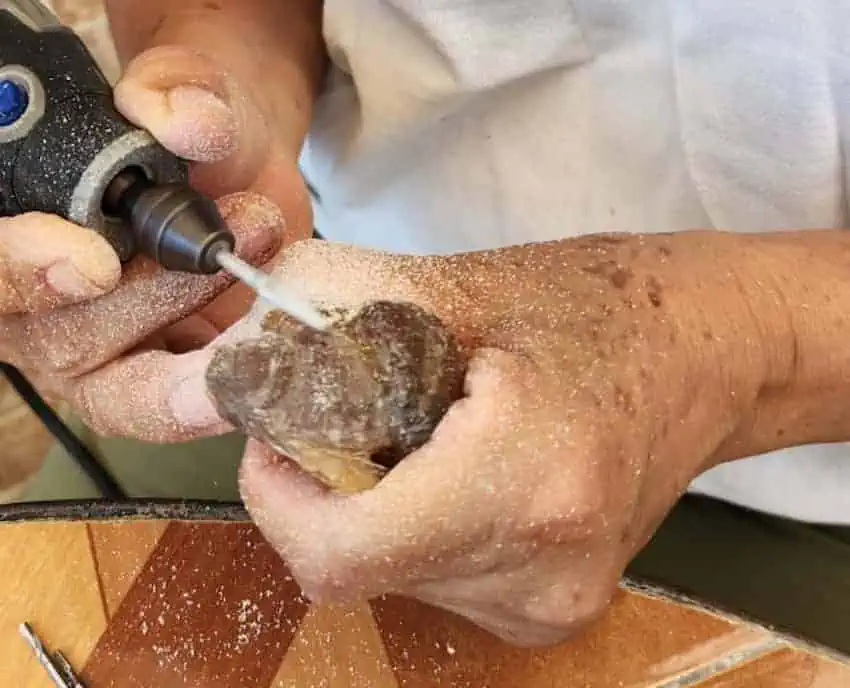From magic to market: amber’s role in centuries of Chiapas’ culture

It is nearly impossible to avoid the numerous street vendors in San Cristóbal de las Casas offering you “authentic Chiapas amber” at a so-called special price. Pro-tip: no matter what anyone tells you, if it’s inexpensive, it isn’t real.
But the vendors’ presence does raise interesting questions about what amber’s role is in the state’s history and culture.
Unsurprisingly, amber was an important tribute and trade item in Mesoamerica for many of the same reasons as in other parts of the world, its unique look and supposed magical and healing properties.
But it never gained the favor with the Spanish after the conquest, as they were far more interested in silver and gold (both notably absent in Chiapas) and likely did not want to continue the gemstone’s pre-Catholicism’s associations. For centuries, the amber’s only value in Mexico was in amulets sold to indigenous mothers to keep the evil eye off their babies. So some amber would continue to travel from the Simojovel in northern Chiapas to San Cristóbal, as noted by travelers and writers like Franz Blom and Moisés de la Peña as late as the mid 20th century.
But this would change by the end of that same century. Economic and political unrest in the 1970s broke up many large farms to the eventual benefit of many Simojovel families, but for a decade or so, many lost their livelihoods. In the 1980s, some did look to amber as an alternative form of income, mining and working the petrified resin, with their product destined for San Cristóbal.

It was international interest starting in the 1990s that changed Simojovel’s fortunes. First, amber had come to the attention of mineral collectors in the U.S. who would pay for exceptional pieces. In 1996, the American Museum of Natural History held an exhibition about amber that included pieces from Chiapas, expanding interest. But it was 1994’s Zapatista uprising that introduced Chiapas to the world, and the result was zapaturismo: foreign idealists hoping to get a glimpse of the black-masked revolutionaries — and looking for a souvenir to take home.
By the 2000s, tourism and amber had grown important enough for the Chiapas government to promote both.
In the 2010s, Chiapas experienced an “amber rush” as the Chinese market discovered Chiapas’ supply. Demand and prices skyrocketed starting in 2012, with many gemstones making their way into beaded bracelets. But it did not last: the Chinese market became saturated, and the fever cooled considerably.
Prices fell, but amber remains an important part of Simojovel’s economy, as well as of Chiapas’ identity. Although it can be found in a number of other municipalities such as Tapilula, Yajalón, Del Bosque, Pantelhó, Ixtapa-Soyaló and Totolapa, Simojovel remains the state’s “amber town” with most residents here dividing their economic activities between mining and agriculture.

Amber mining is important in this impoverished area because it does not require special equipment. One person simply digs in the relatively soft dirt of the mountain, and another sifts through it. But there is no guarantee that the mountain will be generous, so miners often make offerings of candles and incense to increase their chances. Most of what they do find makes its way to San Cristóbal, often to middlemen, and prices are always in flux.
However, more Simojovel residents are learning to obtain greater value from the resource. Local artisan Elizabeth Mendoza says that when she began working the gemstone four decades ago, most miners simply sold unworked or lightly worked stones mounted on cardboard. Over time, artisans arose who could get better prices from polished or cut stones. Today, there are a number who will take the ancient resin all the way to a finished piece of jewelry or another final retail form.
Mendoza learned as a child that polished and cut amber brought more money. Some years ago, she met a “gringo hippie” passing through who showed her how to make jewelry by twisting copper and other wire. Impressed with the results, she and her husband went to Taxco and learned to work silver. Today, she is one of Simojovel’s success stories, inspiring more families to learn more.
Working amber is physically easier than mining it, and many Simojovel women are involved in this stage of the process, as well as in marketing. Although the town’s amber trade has made it more open to the world and more liberal, it is still not easy to be a woman in the amber business.
Most work the material anonymously as part of their domestic chores. In general, Chiapas’ most prominent amber artisans are still men.

Modern demand for Chiapas amber is driven by globalization. Many gemstones are still sent to the U.S. and China, making it difficult for local artisans to compete on price. International tourism is now a mainstay of San Cristóbal’s economy.
The promotion of Chiapas amber has a strong international component as well. Over 25 years ago, the state began an amber expo in the cities of San Cristóbal and Tuxtla Gutiérrez, the state capital. But in 2019, it decided to move the annual event to Mexico City, which multiplied attendance. The recently concluded 2023 event hosted 168 exhibitors from various parts of the state, with about 25,000 national and international attendees.
The rise of the amber industry has had its positives and negatives for the state. Although tough work, amber mining is still more lucrative than subsistence farming. But artisans in Simojovel and San Cristóbal still sell mostly to intermediaries instead of engaging in more lucrative retail.
There does not yet seem to be a Taxco-like future for Simojovel. Although the only highway in the area has improved over the decades, it is still a nearly four-hour trip on rough roads to get to this town tucked away in the mountains around San Cristóbal.
Reaching Simojovel, Mendoza says, is still too difficult for any but the most adventurous of travelers.
Leigh Thelmadatter arrived in Mexico over 20 years ago and fell in love with the land and the culture in particular its handcrafts and art. She is the author of Mexican Cartonería: Paper, Paste and Fiesta (Schiffer 2019). Her culture column appears regularly on Mexico News Daily.
Source: Mexico News Daily

